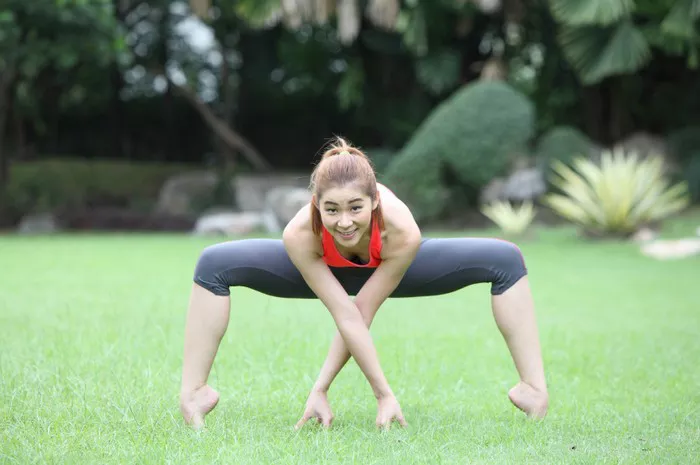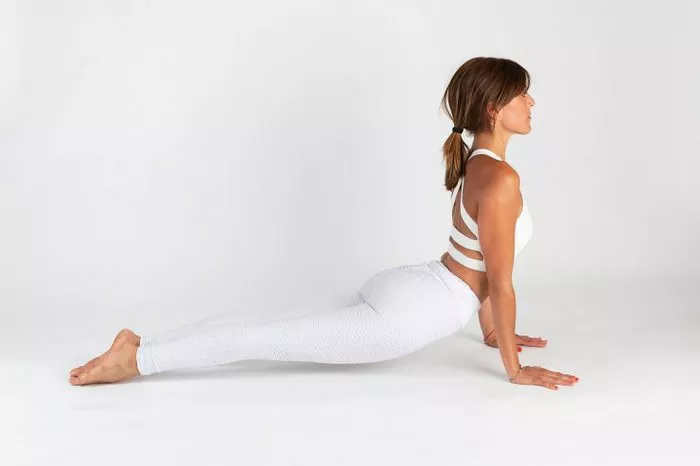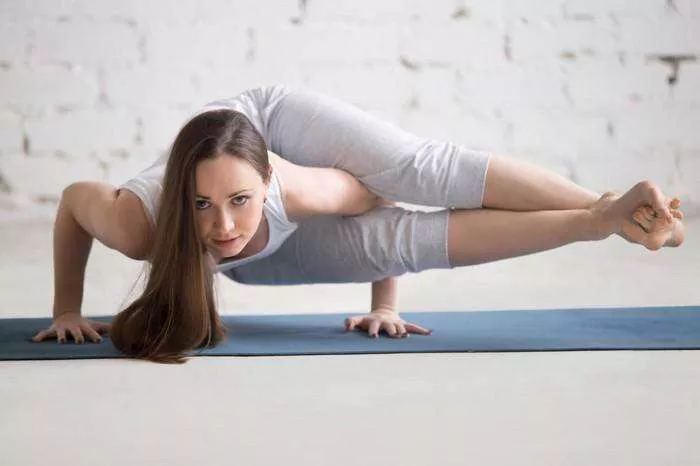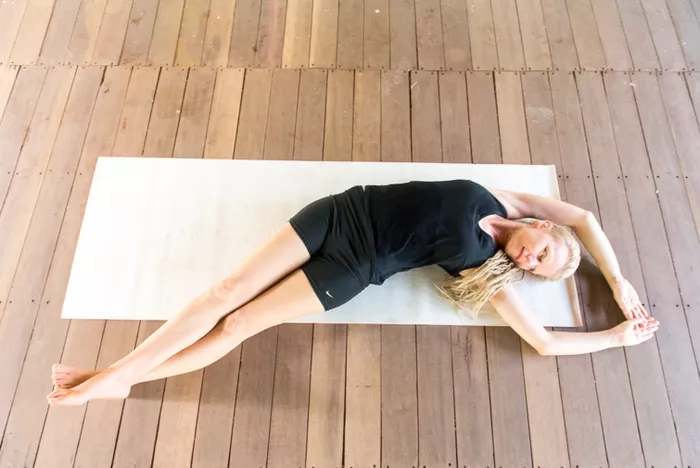Yoga is an ancient practice that combines physical postures, breath control, meditation, and ethical principles to create a holistic approach to physical, mental, and spiritual well-being. One of the most popular poses in yoga is the Bird of Paradise Pose (Svarga Dvidasana), which is known for its beauty and challenge. However, like many advanced poses, Bird of Paradise is not suitable for everyone. While it offers numerous benefits, it also presents risks for certain individuals. In this article, we will explore the Bird of Paradise Pose, its benefits, the common challenges associated with it, and most importantly, who should avoid practicing it.
Understanding the Bird of Paradise Pose (Svarga Dvidasana)
The Bird of Paradise Pose is a standing balance pose that requires flexibility, strength, and concentration. The pose is typically performed in the following way:
- Start in a standing position, with your feet hip-width apart.
- From here, lift one leg up and bring it to the inside of the elbow of the same-side arm, clasping your hands together around your foot.
- Once your foot is secure, straighten your lifted leg and begin to slowly open your hips outward. This will lead you to a deep hip rotation.
- As you balance, extend your free arm forward, and with practice, you can open your chest and reach for the sky.
- The final posture resembles the elegance of a bird in flight, hence the name “Bird of Paradise.”
Benefits of Bird of Paradise Pose
When practiced correctly and safely, the Bird of Paradise Pose offers a number of benefits:
Improves Flexibility: The pose requires a deep stretch in the hips, hamstrings, and groin, helping to improve flexibility in these areas.
Builds Strength: Holding the balance demands engagement of the core, leg muscles, and upper body, particularly the arms and shoulders.
Increases Balance and Coordination: As a balance pose, it challenges your body’s ability to stabilize and coordinate movement, which can improve overall body awareness.
Opens the Chest: The pose encourages a wide opening of the chest, which can enhance lung capacity and promote deep breathing.
Stimulates Circulation: The act of lifting and balancing in this pose helps improve blood circulation, especially to the lower body.
Boosts Mental Focus: Like many balance poses, Bird of Paradise requires mental concentration and focus, helping to calm the mind and improve mental clarity.
However, despite its benefits, Bird of Paradise is an advanced pose that requires a considerable amount of flexibility, strength, and balance. It can also place stress on the body if not practiced correctly. Therefore, not everyone should attempt this pose, particularly those who have certain medical conditions, physical limitations, or injuries.
Who Should Avoid Bird of Paradise Pose?
While Bird of Paradise is an excellent pose for many practitioners, it is not suitable for everyone. People who fall into the following categories should either avoid this pose or practice it with modifications, guidance, and caution:
1. Pregnant Individuals
Pregnancy is a time of significant changes in a woman’s body, and certain yoga poses that require deep stretches, balance, or abdominal pressure can be unsafe during pregnancy. The Bird of Paradise Pose, in particular, places a deep stretch on the hip flexors, and the balancing aspect can be challenging for a pregnant person, especially in the later stages. Additionally, the deep twisting motion required in the pose can be uncomfortable and potentially harmful for the developing baby.
Alternative Poses: Gentle standing poses, seated stretches, and modified balance poses may be more appropriate for pregnant individuals. Always consult a healthcare provider before attempting yoga during pregnancy.
2. People with Recent or Chronic Hip Injuries
The Bird of Paradise Pose requires significant flexibility and strength in the hips, as well as a deep external rotation of the hip joint. For individuals with hip injuries, whether recent or chronic, this pose can exacerbate existing conditions, such as hip labral tears, bursitis, or hip impingement. The strain placed on the hip joint in this pose may worsen pain, inflammation, or limited range of motion.
Alternative Poses: Individuals with hip injuries should focus on poses that encourage hip mobility without strain, such as modified Warrior poses or gentle hip openers. A trained yoga instructor can provide safe alternatives that support healing.
3. People with Lower Back Issues
Bird of Paradise requires a significant amount of spinal mobility, particularly in the lower back. If you have lower back issues such as herniated discs, sciatica, or general discomfort in the lumbar region, this pose may not be appropriate. The act of lifting the leg while simultaneously twisting the torso can place undue stress on the spine, potentially aggravating lower back pain or causing further injury.
Alternative Poses: Gentle backbends like Cobra pose or Bridge pose can help open the chest and stretch the back without straining it. Focus on strengthening the core and maintaining a neutral spine to support back health.
4. Those with Shoulder Injuries or Limited Shoulder Mobility
Bird of Paradise involves both a deep hip stretch and a shoulder-opening action. For people with shoulder injuries or limited shoulder mobility, reaching the arms overhead and supporting the weight of the body can be problematic. Conditions like rotator cuff injuries, frozen shoulder, or impingement can make it difficult to perform the pose correctly and may lead to further strain or injury.
Alternative Poses: Shoulder-friendly alternatives like Downward-Facing Dog, Puppy Pose, or Warrior II can help maintain shoulder mobility and strength without putting excessive stress on the joints.
5. Individuals with Knee Problems
While Bird of Paradise is primarily a hip-opening pose, it also requires balance and strength in the legs. For individuals with knee issues, especially conditions such as patellofemoral pain syndrome, arthritis, or ligament injuries, the position of the legs during this pose may cause discomfort or aggravate existing knee problems. The pose demands that the standing leg be deeply bent and stabilized, which may be challenging and painful for someone with knee problems.
Alternative Poses: Poses like Tree Pose, Warrior I, or Warrior II can provide leg strengthening and balance work without the deep bending and twisting required by Bird of Paradise. A focus on building strength and stability in the legs can help improve knee function over time.
6. People with Balance Issues
Bird of Paradise is a challenging balance pose, and individuals who struggle with stability may find it difficult to perform safely. Conditions such as vertigo, dizziness, or inner ear disorders can make balancing poses particularly risky. Falling or losing balance in the middle of the pose could result in injury.
Alternative Poses: For individuals with balance issues, modified standing poses like Mountain Pose or Chair Pose, as well as gentle balance work using a wall for support, can help improve stability and body awareness.
7. Individuals with Heart Conditions or High Blood Pressure
The Bird of Paradise Pose requires the practitioner to extend their arms overhead and balance on one leg, which can increase heart rate and blood pressure. Individuals with heart conditions, high blood pressure, or other cardiovascular issues should exercise caution when attempting this pose. Straining the body in this way can place unnecessary stress on the heart and circulatory system.
Alternative Poses: Relaxing poses like Child’s Pose, Cat-Cow, or Legs Up the Wall pose can help maintain a gentle flow of energy while being mindful of heart health. Always consult a physician before attempting advanced poses if you have a heart condition or high blood pressure.
8. Those New to Yoga or Inexperienced in Advanced Poses
If you are new to yoga or have not yet developed the necessary flexibility, strength, and balance for more advanced poses, it is best to approach Bird of Paradise with caution. This pose demands not only physical capability but also mental focus and concentration. Attempting it without proper preparation can lead to frustration or injury.
Alternative Poses: Focus on foundational poses like Downward-Facing Dog, Warrior I, or Triangle Pose, which will help develop the necessary strength and flexibility for more advanced poses in the future. Consistency in practice is key to safely progressing to more challenging poses.
How to Modify Bird of Paradise Pose
For those who are not ready to perform the full Bird of Paradise Pose, or for those with limitations, modifications can help make the pose more accessible. Here are a few ways to modify the pose:
Use a Strap: If reaching the foot is difficult, you can use a yoga strap around your lifted foot to help guide it into place without overextending your range of motion.
Partial Extension: Instead of fully straightening your lifted leg, keep the leg bent and work on gradually increasing flexibility over time.
Wall Support: Place your hand on a wall or block for balance and stability, allowing you to focus more on the hip stretch and less on the balance aspect.
Work with a Yoga Teacher: A qualified instructor can guide you through modifications tailored to your body’s specific needs and help ensure safety while practicing this challenging pose.
Conclusion
While Bird of Paradise is a beautiful and rewarding pose that offers a variety of benefits, it is not appropriate for everyone. Individuals with certain health conditions, injuries, or physical limitations should either avoid this pose or practice it with caution and proper guidance. It is essential to listen to your body, honor its limitations, and seek professional advice when needed. Yoga is about cultivating awareness, compassion, and respect for oneself, and the practice of mindfulness extends to recognizing when a pose may not be right for you.
Remember, yoga is a lifelong practice, and the journey is more important than the destination. By practicing yoga with care and awareness, we can cultivate balance, strength, and flexibility, both physically and mentally.
Related Topics:



















